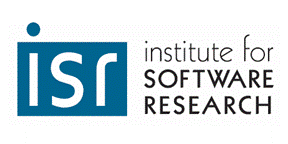
Institute for Software Research
School of Computer Science, Carnegie Mellon University
Cultural Integration in Horizontal Mergers:
A New Model for Measuring Effective Organizational Change
Geoffrey P. Morgan
April 2022
Ph.D. Thesis
Societal Computing
Horizontal mergers of two formerly competing companies often fail in the integration stage, when employees of each organization start working side by side with former competitors. I believe these failures occur because of ineffective diffusion of a new shared organizational culture and its corresponding public identity. Many organizations rely on motivated leadership propagating the identity to their direct reports. This practice leads to the new identity's uneven adoption, because while receptive employees will accept and spread it easily, those who are less receptive may block the new culture’s spread to their work groups. This uneven adoption, in turn, causes mistakes and hinders both individual and group performance. Resistors seize upon poor group performance as further reason not to adopt the new organizational culture, which only lengthens the period of struggle. This phenomenon is particularly damaging in virtual organizations – those that rely on teams of subject matter experts to create value. Virtual organizations are growing more common in the knowledge-driven economy.
In this work, I address elements of horizontal merger failure across three chapters. Each chapter relies on real-world data from the period immediately following the horizontal merger of two large multinational corporations. I will refer to the resulting corporation as MergedCo. In Chapter 1, I use MergedCo's email data to generate windowed reciprocity networks, which represent the organization at work and are good indicators of how the new organizational identity will spread. In Chapter 2, I use the text of MergedCo's emails to characterize the spread of the new organizational culture and elaborate on the implications for MergedCo. In both Chapter 1 and Chapter 2, I compare analysis outcomes to actual survey data from employees at MergedCo.
In Chapter 3, I synthesize my theory of organizational culture diffusion into an active multilevel simulation, which I call the Unified Network Model. I validate the Unified Network Model in relation to its predecessors and demonstrate the model's ability to emulate six stylized facts that are important to organizations. I then instantiate the model with data from the MergedCo case study and comparing the simulation outcomes to actual MergedCo data from a later time period.
Across this work, I have developed new methods that may be re-used in future scholarship. I believe I have contributed three important ideas to the literature:
- The spread of a new organizational identity is a diffusion problem, and that problem helps explain the oft-described integration issues common in large horizontal mergers.
- Quantitative measurement of language tokens provides an empirical and multilevel measure of cultural change over time.
- An active multilevel simulation of organizational operation can predict empirical organizational outcomes of horizontal mergers.
These findings have important implications for organizational leaders and consultants who oversee mergers. For one, they show that leaders should preserve systems of value generation rather than single high-performing employees. Merger consultants must devise explicit strategies for spreading the new organizational culture. Both groups should recognize the importance of corporate culture compatibility
156 pages
James D. Herbsleb, Director, Institute for Software Research
Kathleen M. Carley (Chair)
Linda Argote
Brandy Aven
Guiseppe Labianca (University of Massachsetts, Amherst)
Martial Hebert, Dean, School of Computer Science
Return to:
SCS Technical Report Collection This page maintained by [email protected]
School of Computer Science